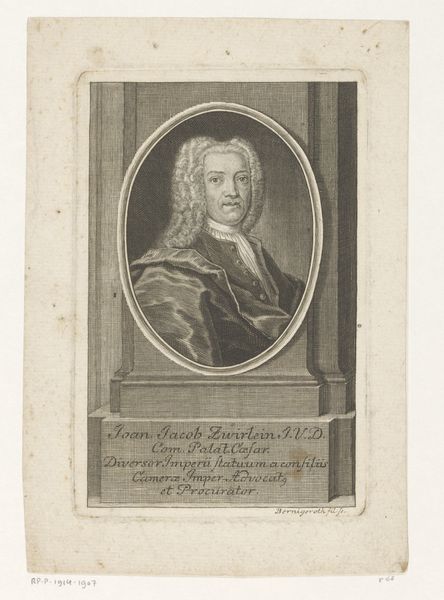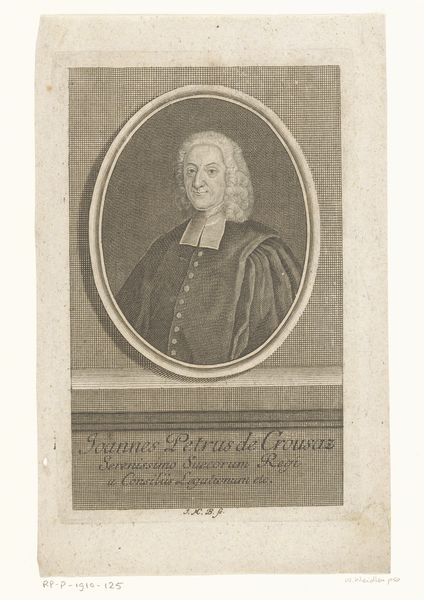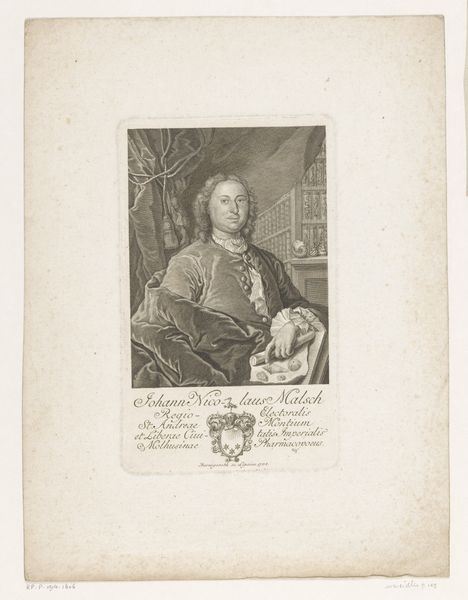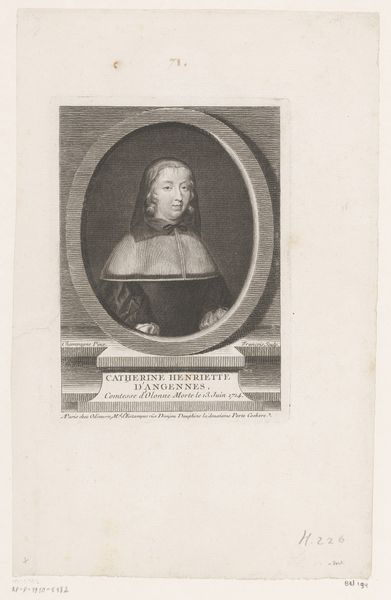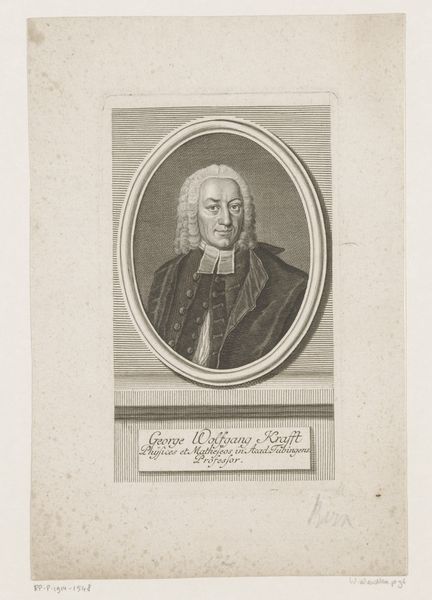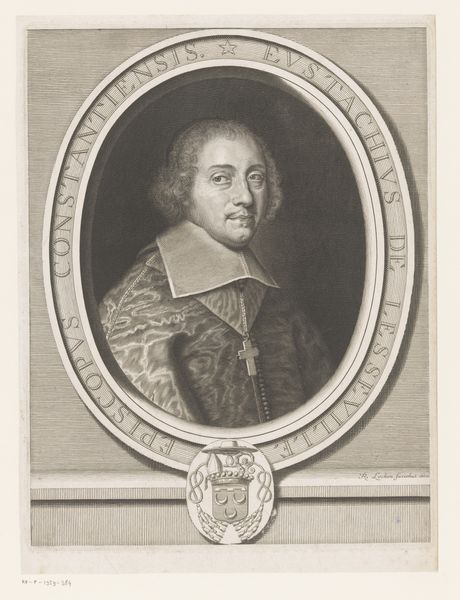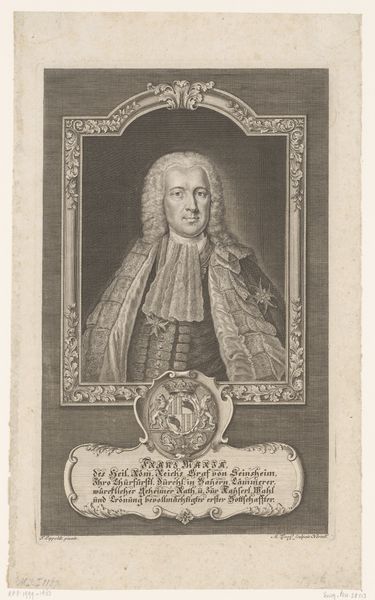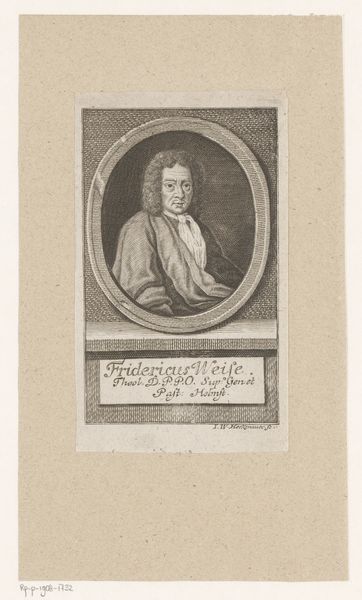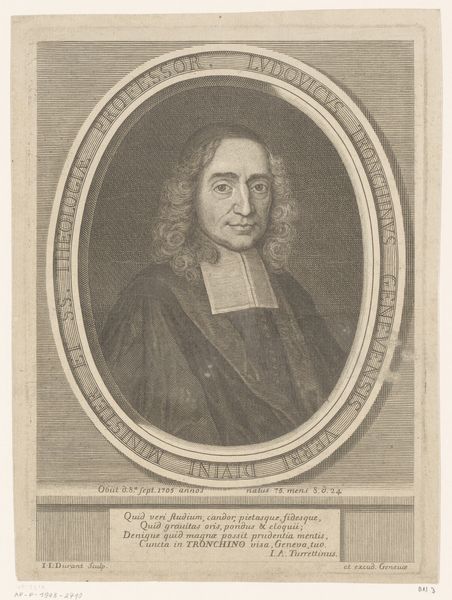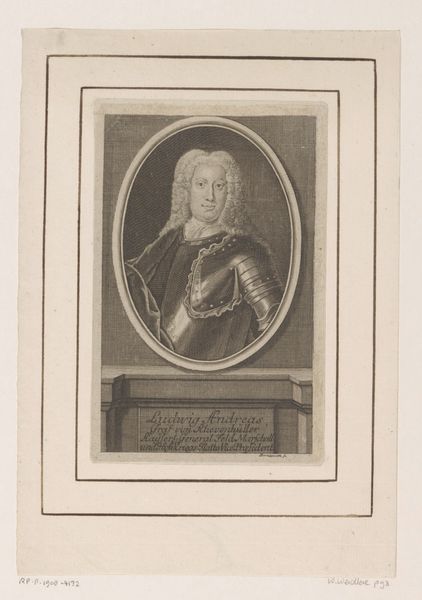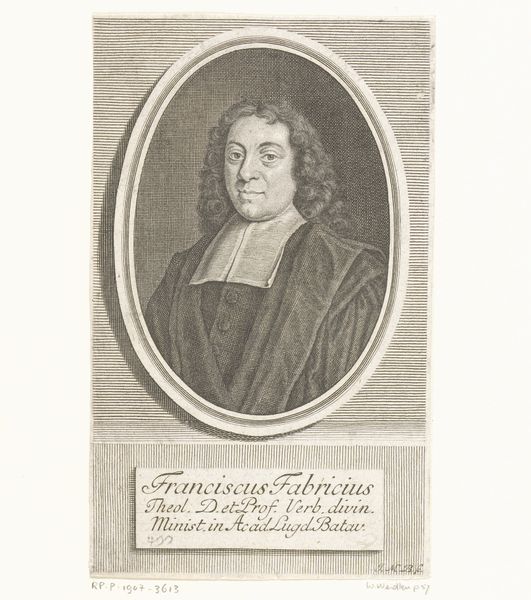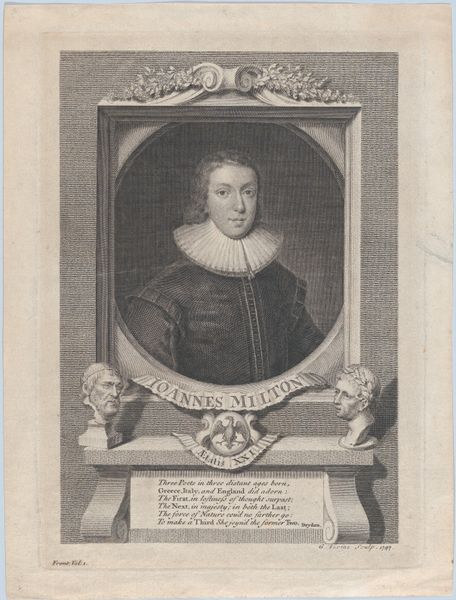
Dimensions: height 153 mm, width 94 mm
Copyright: Rijks Museum: Open Domain
Editor: Here we have a print titled "Portret van Joachim Georg Darjes" by Johann Martin Bernigeroth, created around 1744. It’s a fairly formal portrait, almost austere in its monochrome palette. The lines are so fine, creating this incredibly detailed face. What stands out to you when you look at it? Curator: The oval frame immediately draws my attention – it’s more than just decorative. Framing like this speaks to how individuals were presented and understood within a certain social order. What do you notice about the text at the bottom? Editor: I see that it names him and then lists his affiliations at Academia Jenensi. Curator: Exactly. Bernigeroth is not simply creating an image, but imprinting Joachim Georg Darjes within a network of status, intellect and social standing. What do you make of the drapery? It is almost classical, against the baroque wig. Editor: That’s an interesting contrast. The classical elements could suggest wisdom and intellectualism, while the wig points to his belonging to a certain period and courtly style. Curator: Precisely. Those intentional artistic choices reveal a deliberate construction of identity, not just for Darjes, but perhaps for the institution he represents as well. Think of it as carefully crafted visual propaganda. What kind of legacy is this image trying to create? Editor: It feels like the print is creating an image of timeless wisdom wrapped in the trappings of his time. So it’s about more than just one man, but also the values he stood for. Curator: Absolutely. It’s a fascinating example of how images communicate cultural memory and aspirations. I didn't really see it until you mentioned the idea of lasting legacy. Editor: That’s amazing! I am really learning a lot by carefully examining this image. Thanks!
Comments
No comments
Be the first to comment and join the conversation on the ultimate creative platform.
